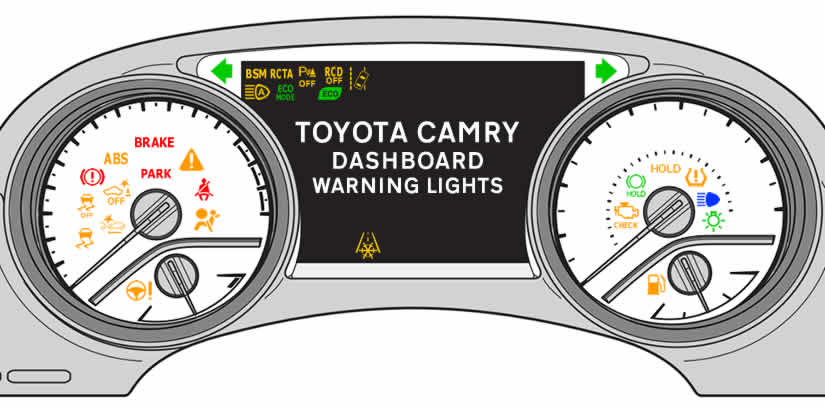Toyota Camry Dashboard Warning Lights
The hugely popular Camry has been manufactured by Japanese car maker Toyota since 1982 and is currently on its 8th generation. Also known as the Toyota Aurion in Australia, the Toyota Camry dashboard warning lights offer an explanation of each symbol, plus what action to take based on the manufacturer’s recommendations. The Toyota Camry Hybrid’s warning lights are also explained.
In terms of color, all car warning lights are standardized, with red being urgent, possible risk of safety or a serious vehicle fault and yellow being a maintenance issue or a non-urgent fault. Yellow warning lights are also used if a safety system has been deactivated when it is active by default. Dashboard display designs and warning light locations will vary depending on your model of Camry.
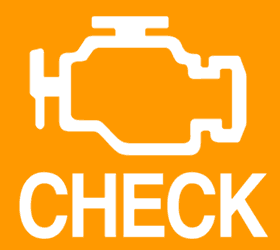 Check Engine Light
Check Engine Light
The check engine warning light is one of the most common fault symbols to illuminate on a vehicle and can also be one of the most confusing. The Toyota Camry check engine warning light can illuminate due to a fault within the vehicle’s engine emissions control system, the electronic throttle control system or the electronic automatic transmission control system.
Due to the many potential faults that can trigger the engine warning light, the only method for locating the fault is to use diagnostic equipment. When the engine light comes on, a fault code is typically generated and stored within the vehicle’s ECU. Diagnostic fault code readers, either used in a vehicle repair workshop or purchased online, can be used to connect to the diagnostic port and read the codes. Once read, the tool will provide assistance on the location of the fault.
You can usually continue driving with the check engine light on, but if it is flashing, it may result in engine damage due to misfiring. If the engine light is flashing, reduce speed and avoid hard acceleration until the light becomes stable. If the engine light continues to flash, have your vehicle serviced immediately. For further information, see reasons why the engine warning light is on.
 Low Oil Pressure Light
Low Oil Pressure Light
The low oil pressure warning light can illuminate in red when the oil pressure is low, but can also illuminate with oil levels are low. If the light comes on while you’re driving, it’s essential that you stop immediately and switch off the engine, else serious engine damage may occur. First check oil levels and add oil if low. Only continue driving if the warning light goes off.
Another warning light related to engine oil is the MAINT REQD ![]() warning. This light illuminates on certain versions of the Toyota Camry indicating that the engine oil requires changing. If you’re having your oil changes by a vehicle workshop, they should reset the MAINT REQD warning light for you. However, they do on occasions forget. If they have forgotten, or you’re changing the oil yourself, here’s how you reset the Toyota Camry MAINT REQD warning light:
warning. This light illuminates on certain versions of the Toyota Camry indicating that the engine oil requires changing. If you’re having your oil changes by a vehicle workshop, they should reset the MAINT REQD warning light for you. However, they do on occasions forget. If they have forgotten, or you’re changing the oil yourself, here’s how you reset the Toyota Camry MAINT REQD warning light:
- Insert the key into the ignition and turn it two clicks to the ON position.
- Press the ODO trip button until you see Trip A.
- Move the ignition key back one click to ACC.
- Press and hold the ODO trip button.
- Turn the ignition key forward again to the ON position.
- Continue to hold the ODO trip button until you hear a series of 5 beeps.
- That’s it, the MAINT REQD warning light has now been reset.
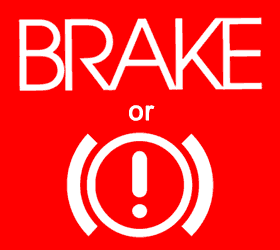 Brake Warning Light
Brake Warning Light
The red brake system warning light comes on as either an indication of low brake fluid levels, or that there’s a malfunction with the brake system. If the brake light illuminates while driving, stop as soon as safely possible and contact a Toyota workshop. If topping up with brake fluid, the Toyota Camry brake fluid specifications are as follows:
- SAE J1703 or FMVSS No. 116 DOT 3, or
- SAE J1704 or FMVSS No. 116 DOT 4.
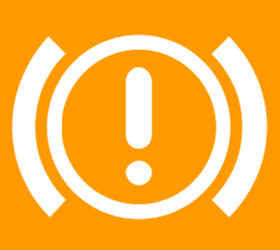 Electric Parking Brake Light
Electric Parking Brake Light
The yellow brake warning light means that there’s a problem with the Toyota Camry’s electric parking brake (EPB). The fault often arises due to an electrical fault with the electronic parking brake module or motor. Often a fault code will be logged in the vehicle’s ECU, where scan tools can be used to read. It’s advised to have the fault fixed as soon as possible due to the risk of the EPB failing to secure the vehicle while parked, or failing to release.
 Airbag Warning Light
Airbag Warning Light
If the Toyota Camry’s airbag warning light remains constantly lit, it means there’s a problem with the potential release of the SRS airbags and/or the seat belt pretensioner system activating. Some of the common reasons for the airbag warning light include wiring / sensor fault, steering wheel clock spring fault and airbag module. Suitable scan tools can be used to read fault codes and locate the issue.
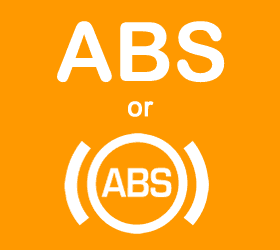 ABS Warning Light
ABS Warning Light
The Anti-lock Braking System (ABS) helps to prevent the wheels from locking when the driver applies the brakes, often during an emergency situation. Due to the wheels not locking, it means the vehicle is steerable. If the Toyota Camry’s airbag warning light remains lit, it means that either the ABS system has a malfunction, or there’s a fault with the brake assist system. One of the most common causes for ABS faults is a malfunctioning wheel speed sensor.
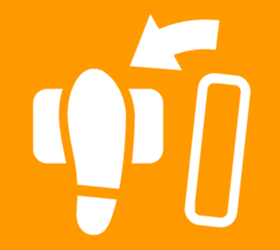 Press Footbrake Warning Light
Press Footbrake Warning Light
If the press footbrake warning light illuminates along with a buzzer sound, it indicates a fault with either the brake override system, drive-start control or parking support brake. In this instance, have your vehicle inspected by a Toyota workshop.
The warning light and buzzer also indicates the gear shit position was changed and Drive Start Control was operated while simultaneously pressing the accelerator pedal. In this situation, momentarily release the accelerator pedal.
- Toyota’s Brake Override System cuts engine power and illuminates a warning light if the driver presses both the brake and accelerator at the same time.
- Toyota’s Drive-Start Control can recognize if the wrong gear has been selected while the driver is simultaneously pressing the accelerator pedal. Engine power is reduced along with a warning light.
- Toyota’s Parking Support Brake can apply the brake automatically when the driver is reversing at slow speeds if the system determines a collision is imminent.
 Parking Brake Warning Light
Parking Brake Warning Light
If the red parking brake warning light comes on or flashes along with a buzzer sound, it means the parking brake is either not properly released or not properly secured. If the parking warning light remains constantly lit, it may indicate a fault. Often the fault is due to a malfunctioning parking brake switch.
 Brake Hold Warning Light
Brake Hold Warning Light
The Toyota Camry’s brake hold system keeps the brakes applied when the gear shift lever is in D, S or N and releases the brakes when the driver presses the accelerator pedal. In order for the brake hold system to operate, the driver’s door must be closed and their seat belt fastened. If the HOLD warning light flashes in yellow, it means there’s a fault with the brake hold system. If there’s a fault with the system, regular brakes will continue to work as normal.
 Power Steering Warning Light
Power Steering Warning Light
The Toyota Camry has electric power steering where unlike hydraulic power steering, it does not require hydraulic fluid to operate. If the power steering warning light remains constantly lit, it either means there’s a permanent or temporary fault with the electric power steering.
Temporary faults involve the power steering motor overheating, often by excessive steering (lock-to-lock) at slow speeds, or by leaving the steering on full lock while the engine is running and the vehicle is stationary.
If you are experiencing the power steering warning light, the first thing to do is to check tire pressures and also check tire wear is even (a tire isn’t wearing more quickly on one side compared to the other) to ensure alignment of your wheels is correct. Some of the common faults that can cause the Toyota Camry’s power steering warning light to come on include:
- Torque sensor
- Tires
- Electric steering rack/column
- Low battery voltage
- Steering ECU + Supply voltage
- Steering column shaft
- Power steering motor
When the power steering light comes on, in modern versions of the Camry, a fault code will be stored in the ECU. Diagnostic fault code readers can scan for codes and help locate the fault.
 Master Warning Light
Master Warning Light
The Toyota Camry has a yellow triangle containing an exclamation point. This is called the master warning light and comes on for a variety of reasons. The master warning light may come on due to a serious fault, but equally, it can illuminate due to a minor issue such as a door not being shut properly.
The master warning light can illuminate independently, with another warning light or with a buzzer sound. For further information on this warning symbol, see Toyota master warning light meaning.
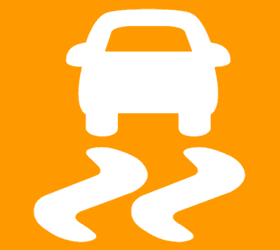 VSC Warning Light
VSC Warning Light
The Toyota Camry VSC (Vehicle Stability Control) system can help to reduce oversteer and understeer, essentially keeping the vehicle stable, particularly when cornering. The TRAC system helps in reducing tire spin and can if need be, deactivated independently of the VSC system. The VSC warning light illuminates for a possible two reasons:
- Flashes: VSC or TRAC is currently operating
- Permanently lit: There is a fault with the VSC / TRAC system
It is safe to continue driving if your Toyota Camry’s VSC light is on, but remain cautious that you may experience greater levels of instability than normal. The most common reason for a VSC fault is a malfunctioning wheel speed sensor. VSC is also known as ESC (Electronic Stability Control). For more information, see What ESC is in Cars and How Does ESC Work in Cars.
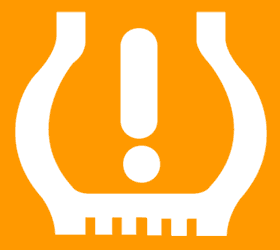 Tire Pressure Warning Light
Tire Pressure Warning Light
The Toyota Camry tire pressure warning light remains lit, indicating that one or more tires has lost pressure. If the warning light comes on, first check for punctures. Tire pressures should ideally be adjusted when cold and adjusted to the specified level found on the placard inside the driver’s door. See cold tyre pressure explained.
If the tire pressure light flashes for around 60 seconds, then remains lit, it means there’s a problem with the tire pressure warning system. The Toyota Camry uses a ‘direct’ tire pressure monitoring system meaning that pressure data is taken directly from sensors installed in the tire valve. Some of the more common reasons why the tire warning light flashes includes:
- Wheels have been fitted that are not within Toyota’s recommended equipment
- Tires have been fitted that are not within Toyota’s recommended equipment
- Tires have been fitted that is not of a specified size
- Tires have been fitted without a pressure sensor or the sensor has been damaged
- Tire chains are fitted
- Tire inflation pressure is much higher than the specified level
- ID codes of the tire pressure warning valve and transmitters are not registered in the tire pressure warning computer
Tire Pressure System Reset
You may on occasions need to reset the tire pressure warning system, such as for example when rotating tires or changing pressures. For information on how to do this, see Toyota Camry tire pressure light reset.
 Battery Warning Light
Battery Warning Light
The Toyota Camry battery warning light should illuminate when the ignition is on and go out shortly after the engine has started. If it remains lit or comes on while driving, it means there’s a malfunction with the charging system. If the battery is no longer charging, the engine may shut down after a period of time. It’s advisable that you make your way immediately to a vehicle repair workshop for analysis. A common reasons for the battery warning light is:
- Failing alternator
- Drive belts loose or broken
- Loose or corroded battery terminals
- Wiring issue
- Ageing battery
Toyota Camry Sensors
Modern versions of the Toyota Camry utilize various safety systems that are designed to increase driver safety and the safety of other road users. These systems use an array of sensors and radars. To maintain optimal use of these systems, ensure that these areas are kept clear of objects such as stickers and remain clean from dirt, snow etc.
The camera can also be affected by moisture, for example being fogged up or covered with condensation. Additionally, the camera may not operate temporarily due to overheating. If for example your vehicle has been parked in the hot sun, the camera may not operate until it has cooled down. The Toyota Camry sensor locations are as follows:
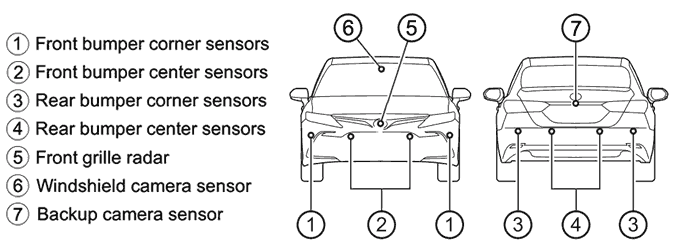
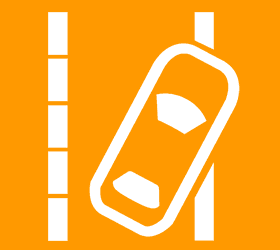 LTA OFF Warning Light
LTA OFF Warning Light
LTA stands for Lane Tracing Assist and is the Toyota Camry’s safety system that warns the driver if they unintentionally leave a lane if the vehicle crosses a clear yellow line without signalling. The LTA system may also gently adjust steering to keep the vehicle within the lane lines.
If there is a fault with the LTA system, a yellow warning light will illuminate and you may see a message on the dashboard: LTA Malfunction, LTA Unavailable. LTA makes use of a camera located at the top-center of the windshield and a radar located in the front grille of the vehicle. Ensure these areas are kept clear and clean of dirt and debris.
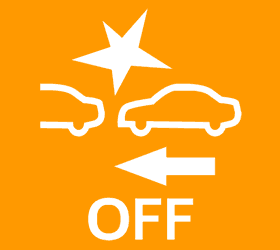 PCS OFF Warning Light
PCS OFF Warning Light
PCS stands for Pre-Collision System and is a Toyota Camry safety feature that uses a camera and radar to monitor object ahead. If the PCS determines that a collision with an object, such as another vehicle, cyclist or pedestrian is high, a visible warning alert an buzzer will sound. If a collision is extremely high, the vehicle’s brakes are automatically applied.
If the PCS OFF warning light remains lit in yellow, it means there’s a fault with the system. This can be due the front-facing camera or radar being obstructed by dirt (see Toyota Camry sensors diagram).
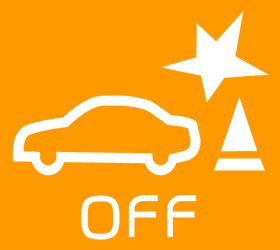 PKSB OFF Warning Light
PKSB OFF Warning Light
The Toyota Camry’s PKSB stands for Parking Support Brake system and is a safety feature that operates at low speed or when reversing to alert the driver of a potential collision. A warning light and buzzer sound will alert the driver to a high chance of collision. If an extremely high chance of collision is detected, brakes are automatically applied.
If the PKSB OFF warning light remains on in yellow and a buzzer sounds, it means there’s a fault with the system. The PKSB system uses sensors located in the front and rear bumper as can be seen in the Toyota Camry sensors diagram. Ensure these areas are clear and clean.
 Parking Assist OFF Warning Light
Parking Assist OFF Warning Light
The Toyota Camry’s intuitive parking assist system helps drivers to park by use of sensors located in the front and rear bumper. Distances are measured and displayed on the multi-information display. If the system does not appear to be operating correctly, the intuitive parking assist off warning light remains on along with a buzzer sound, of you’re receiving a message saying it’s temporarily unavailable, check all sensor areas are clear of obstruction.
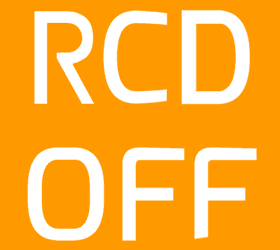 RCD OFF Warning Light
RCD OFF Warning Light
The Toyota Camry’s Rear Camera Detection (RCD) system is for use when the driver is reversing. The RCD system warns the driver by use of a buzzer sound when a pedestrian is detected. If the RCD OFF warning light remains lit along with a buzzer alert, it means the system is not functioning properly. Ensure the backup camera is clean of any dirt or debris.
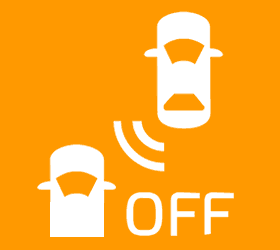 BSM OFF Warning Light
BSM OFF Warning Light
The Toyota Camry’s Blind Spot Monitoring (BSM) system warns the driver if a vehicle is in the driver’s blind spot when changing lanes. The system uses two sensors, one located on each corner of the vehicle’s rear bumper. The system may not operate correctly in extreme high or low temperatures, or if the sensors are covered in dirt, snow etc.
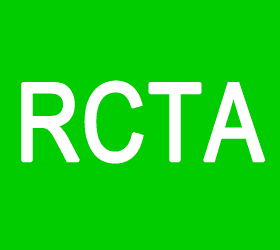 RCTA Warning Light
RCTA Warning Light
The Toyota Camry’s RCTA stands for ‘Rear Cross Traffic Alert’ and by using rear side sensors installed inside the rear bumper, the system assists the driver when backing up. When backing up, if the system detects a vehicle approaching from the side, a visible alert is displayed on the multi-information display and a warning buzzer will sound.
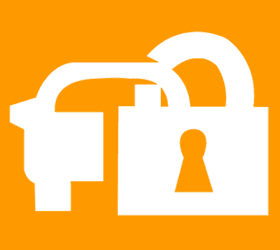 Security Warning Light
Security Warning Light
The car and lock symbol is the Toyota Camry’s security indicator warning light. The security indicator light flashes after the key has been removed from the ignition, or engine switch has been turned off to indicate that the immobilizer system is in operation. If the security light continues to flash and the engine will not start, ensure that your key is away from metallic objects or an object that may interfere with the signal. Try a spare key if you have one.
 Low Outside Temperature Warning Light
Low Outside Temperature Warning Light
The Toyota Camry snowflake symbol is the low outside temperature warning. The low outside temperature warning light comes on when there’s a risk of ice on the road. The symbol illuminates when the ambient temperature is 37°F (3°C) or lower.
 Automatic High Beam Light
Automatic High Beam Light
Later versions of the Toyota Camry may come equipped with automatic high beams (AHB). AHB uses the camera located inside the upper-center portion of the windshield. The camera assesses headlights and tail lights of other vehicles along with streetlights and automatically turns the vehicle’s high beams on or off according to what’s happening ahead. The system can be switched on or off by pressing the button with the automatic high beams symbol.
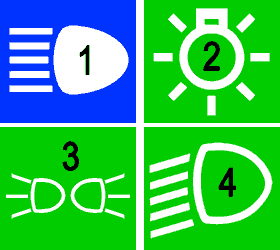 Toyota Camry Lights Symbols
Toyota Camry Lights Symbols
1. This symbol illuminates in blue when the vehicle’s high beams have been activated.
2. When this symbol is illuminates, the headlights, daytime running lights, side marker, parking, tail, license plate, instrument panel lights are on.
3. The side marker, parking, tail, license plate, instrument panel lights, and daytime running lights are on.
4. When this symbol is illuminates, the headlights, side marker, parking, tail, license plate, instrument panel lights (except daytime running lights) are on.
 Toyota Camry Driving Modes
Toyota Camry Driving Modes
The Toyota Camry has 3 driving modes; Eco, Normal and Sport. Eco drive mode, keeps engine speeds lower by making gear changes sooner than usual. Use this mode to achieve lower fuel consumption. Sport mode tightens up acceleration response and steering and will maintain certain gears for longer to aid in acceleration. Sport mode increases fuel consumption. For a balance of the two, select Normal mode.
Toyota Camry Hybrid
The warning lights detailed above apply to both the Toyota Camry and the Camry hybrid version. The following warning lights apply only to the Toyota Camry Hybrid. On the left side of the Toyota Camry Hybrid’s instrument cluster, you’ll find the following information relating to the hybrid system:
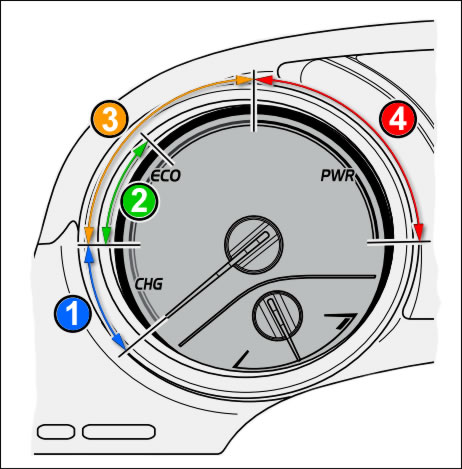
![]() This section of the dial indicates the battery charge area, where the battery is charging due to regenerative braking.
This section of the dial indicates the battery charge area, where the battery is charging due to regenerative braking.
![]() This section is the Hybrid ECO area. If the needle is in this area, it shows that the gasoline engine is not being used very often, making for better economy.
This section is the Hybrid ECO area. If the needle is in this area, it shows that the gasoline engine is not being used very often, making for better economy.
![]() When the needle is in this section, it means that the vehicle is being driven in an Eco-friendly manner, helping to conserve fuel and reduce emissions.
When the needle is in this section, it means that the vehicle is being driven in an Eco-friendly manner, helping to conserve fuel and reduce emissions.
![]() In this section, the needle indicates that the Eco-friendly driving manner has been exceeded and greater quantities of fuel will be used.
In this section, the needle indicates that the Eco-friendly driving manner has been exceeded and greater quantities of fuel will be used.
 Camry hybrid Ready Light
Camry hybrid Ready Light
The Toyota Camry hybrid ready light comes on after you have run through the start-up procedure and indicates that the car has checked its systems and is ready to start and drive. If the ready light does not illuminate, the car will not move. The Toyota Camry Hybrid starting procedure is as follows:
- Check the parking brake is applied.
- Check the gear shift lever is in the Park (P) position.
- Firmly press the brake pedal. At this point, the key light
 should illuminate on the multi-information display along with a message. If not, the hybrid system cannot be started.
should illuminate on the multi-information display along with a message. If not, the hybrid system cannot be started. - Press the POWER button briefly but firmly.
- Continue pressing the brake pedal and the Ready light should illuminate.
- When the Ready light comes on, the vehicle is good to drive.
 Camry hybrid EV Light
Camry hybrid EV Light
The Toyota Camry hybrid EV light illuminates when the car is driven using only the electric motor and the gasoline engine has stopped. The gasoline engine may not stop during:
- Engine warmup
- Hybrid battery charging
- The hybrid battery temperature is too high or too low
- When the heater inside the vehicle is switched on
 Camry hybrid EV Mode Light
Camry hybrid EV Mode Light
The Toyota Camry hybrid EV mode light comes on when electric power is supplied to the battery and only the electric motor is used to drive the vehicle. EV mode can be activated or deactivated via a button on the center console. EV mode cannot always be activated and when so, an audible alert will sound, along with a message on the dashboard instrument cluster. Conditions in which the Toyota Camry Hybrid’s EV mode cannot be initiated are:
- The hybrid system temperature is too high or too low
- The gasoline engine is warming up
- They hybrid battery charge level is too low
- The vehicle’s speed is too high
- The accelerator pedal is pressed too firmly
- The vehicle is on a hill
- The windshield defogger is in use
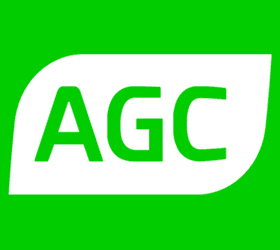 Camry hybrid AGC Light
Camry hybrid AGC Light
The Toyota Camry hybrid’s AGC stands for ‘Auto Glide Control’ and is a function that when driving in Eco drive mode, with the gear selector lever in Drive (D), releasing the accelerator pedal will activate Auto Glide Control. When AGC is active, the electric motor will be controlled and deceleration will be reduced, allowing the vehicle to coast. This can help to increase fuel efficiency.
When AGC is active, the light will illuminate in the dashboard instrument display. AGC may not initiate when:
- The vehicle is travelling downhill and increasing in speed
- When the vehicle speed is around 10 mph or less
- When the brake pedal is pressed
- When the gear selector lever is not in Drive (D)
